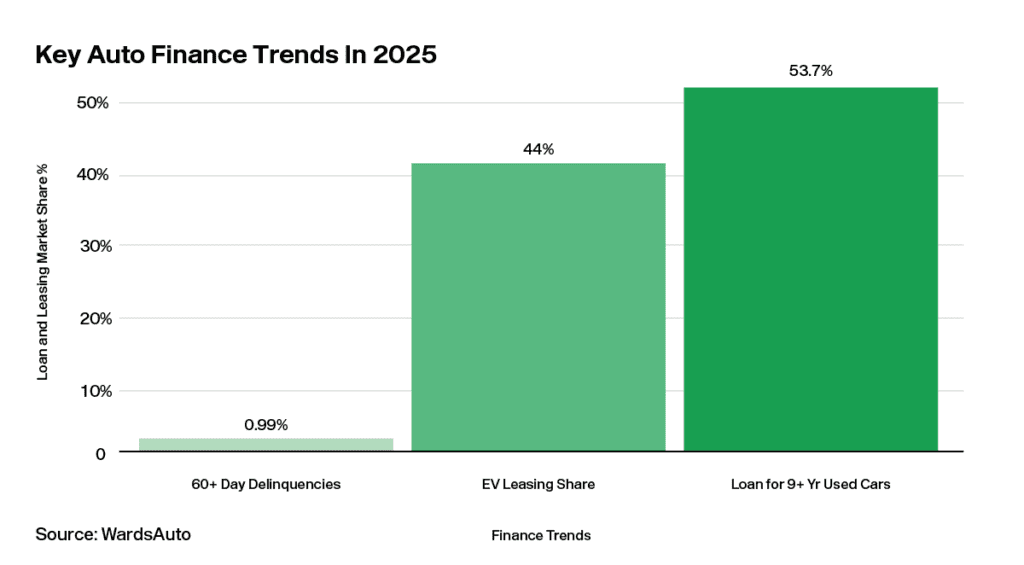🗞️ Industry roundup:

FROM KELLEY BLUE BOOK: When will new car prices drop?
New car prices remain significantly higher than pre-pandemic levels, with the average transaction price still nearly $11,000 above January 2020 levels, despite a recent dip. Inventory levels increased to a 96-day supply, creating more buying opportunities, especially for overstocked brands like Jaguar, Lincoln, and Mini, as well as EVs offering 0% financing and cash-back deals. Trade-in values remain strong due to used car shortages, but declining manufacturer incentives and rising insurance costs (up 11.8% year over year) continue to impact affordability. As a result, strategic deal-hunting and financing remain crucial for shoppers in 2025.
FROM AUTOBODY NEWS: Average new-vehicle price drops 2.2% in January, incentives fall
The average transaction price (ATP) for new vehicles fell 2.2% in January to $48,641, driven by a sharp decline in luxury sales, with brands like Audi, BMW, Cadillac, and Lexus seeing drops of over 50% from December. Despite this, prices remained 1.3% higher year over year, and incentives also declined, averaging 7.2% of ATP compared to 8.0% the previous month. Meanwhile, EV prices held steady, Jeep’s ATPs dropped nearly 9% year over year, and overall new-vehicle sales volume increased 5.1% from January 2023 but saw a significant decline from December’s surge.

FROM WARDSAUTO: Auto Finance: What’s hot, what’s not in 2025
Affordability remains a major focus in auto finance this year, with high new and used car prices pushing consumers toward older used vehicles, with those 9-plus years old now accounting for 53.7% of loans for borrowers with credit scores above 660. Leasing is making a comeback, especially for EVs, as it offers lower monthly payments and access to tax incentives. Meanwhile, delinquencies are rising, with 60-plus-day late payments reaching 0.99% of loan balances in Q4 2024, leading some lenders to prioritize lower-risk borrowers. For dealers, this means adjusting inventory to meet demand for older used cars while capitalizing on leasing growth and shifting financing trends.
FROM ALVAREZ & MARSAL: A look into key themes to monitor during 2025
In 2025, automotive dealers face major shifts from evolving EV policies to industry consolidation and new trade regulations. A potential Honda and Nissan merger could reshape competition, while reduced federal EV incentives may dampen demand. Dealers must also navigate new 25% tariffs on goods from Mexico and Canada and 10% tariffs on Chinese imports, which could increase vehicle and parts costs, squeezing margins. Major recalls from Honda and Ford will also pressure service departments, with 580,000 vehicles needing repairs. To stay competitive, dealers must remain agile, balancing new and used vehicle trends.
👍 Enjoyed this roundup?
Subscribe to Vinsights for regular automotive industry updates direct to your inbox.
Want more top headlines? Catch up on past editions of Vinsights.
About Lotlinx:
Lotlinx empowers automobile dealers with data and technology to give the best possible market advantage on every vehicle transaction. Lotlinx offers a suite of features such as real-time market analysis, inventory management, and precision targeted vehicle advertising. Dealers leverage the platform to identify potential inventory risks and execute VIN-specific strategies enabling them to move inventory faster and more efficiently.
To start leveraging Lotlinx technology at your dealership, request a free, individualized Inventory Risk Analysis.